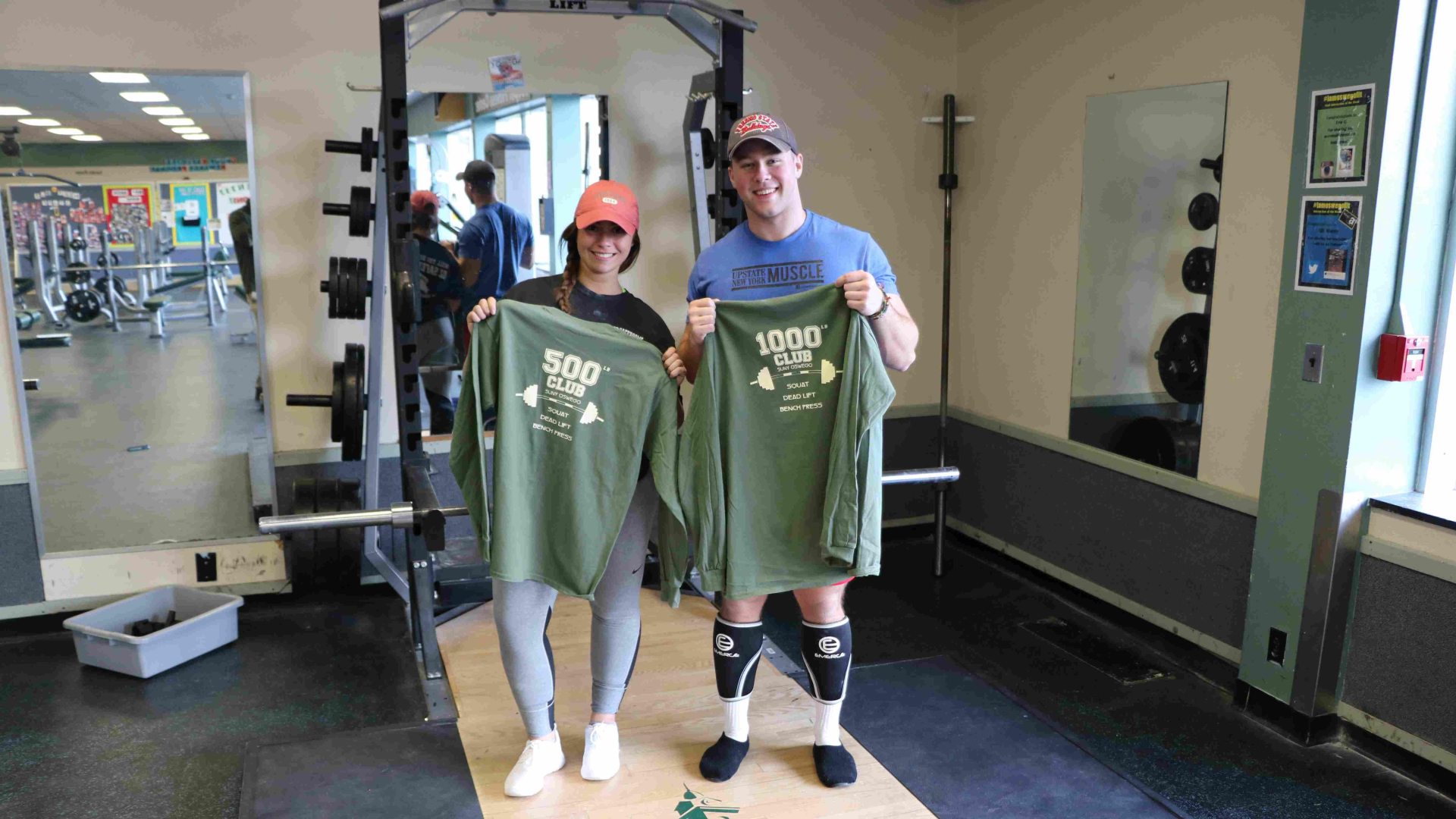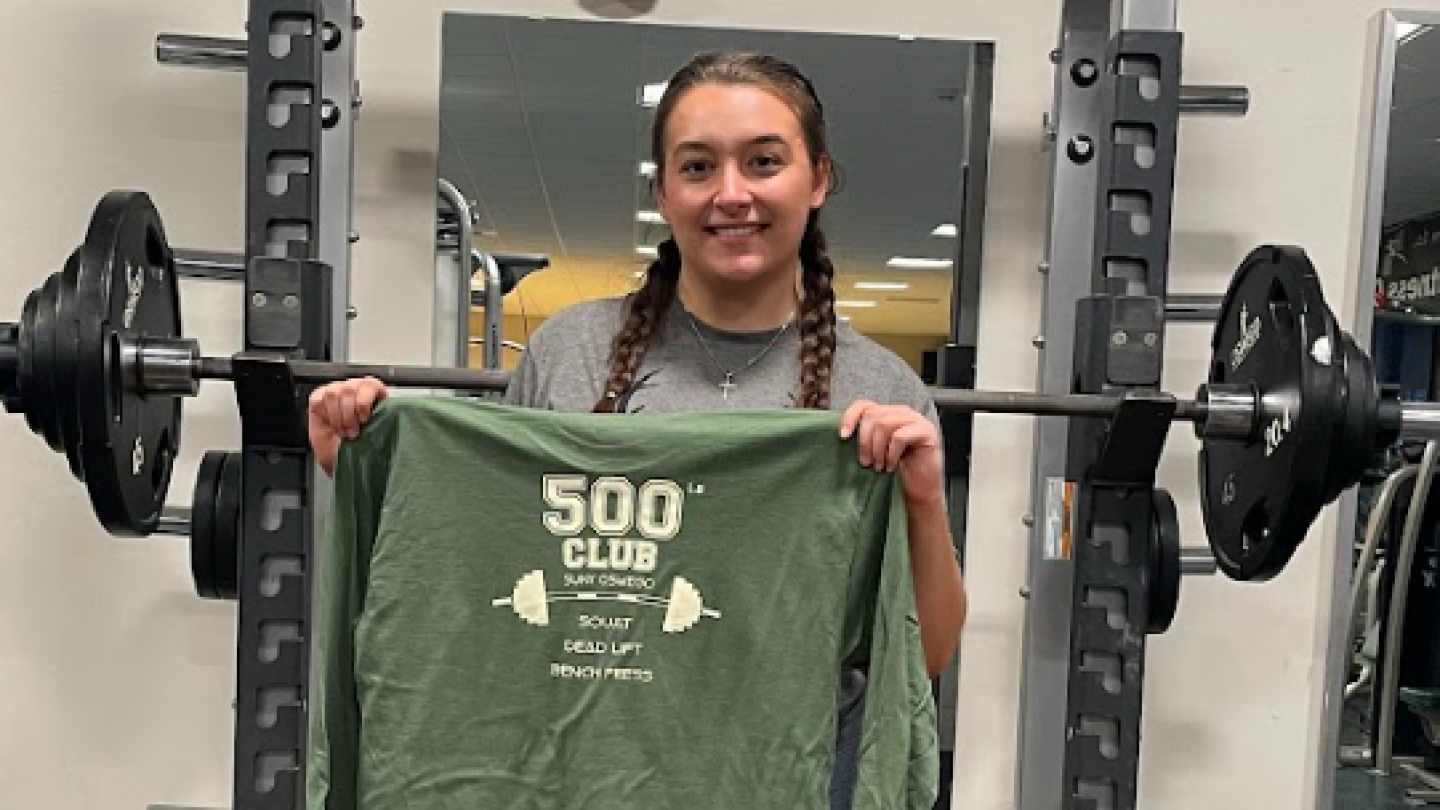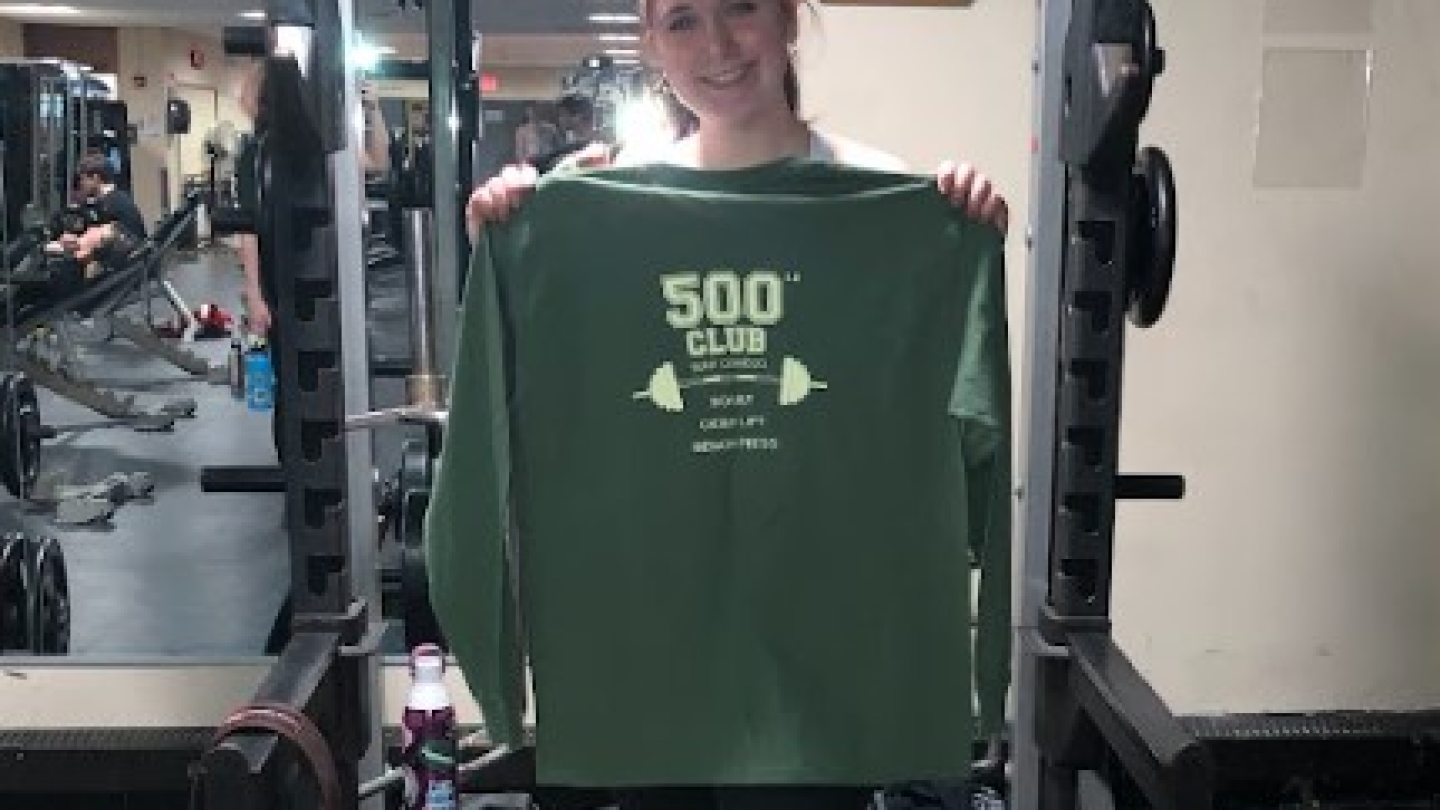The purpose of the 1000 and 500 pound clubs is to acknowledge the physical achievement and dedication to training of fitness center members.
To become a “member” of the club, one must perform one repetition of a Squat, Bench Press and Deadlift. After all 3 lifts are successfully completed, the total weight lifted is added up. To be a member of the 500 lb. club (women only), the total weight lifted must be 500 lbs or greater. To be a member of the 1000 lb. club (open), the total weight lifted must be 1000 lbs or greater. All members of the club will receive a t‐shirt.
E‐mail [email protected] to set‐up an appointment with our personal trainers who will act as judges and spotters for your lifts. This challenge is ongoing and can be completed anytime during the semester and you may re‐test at any time as well.




